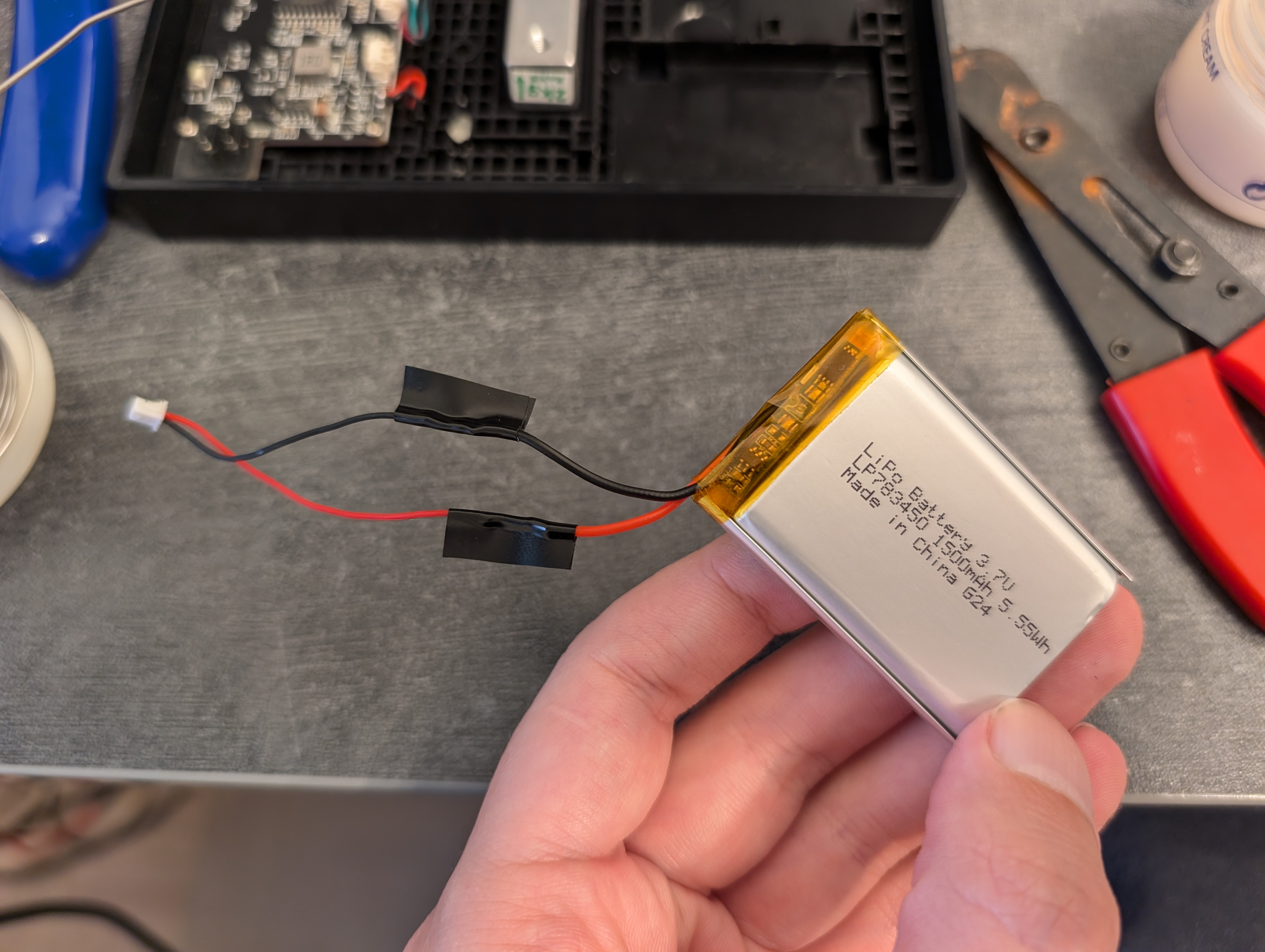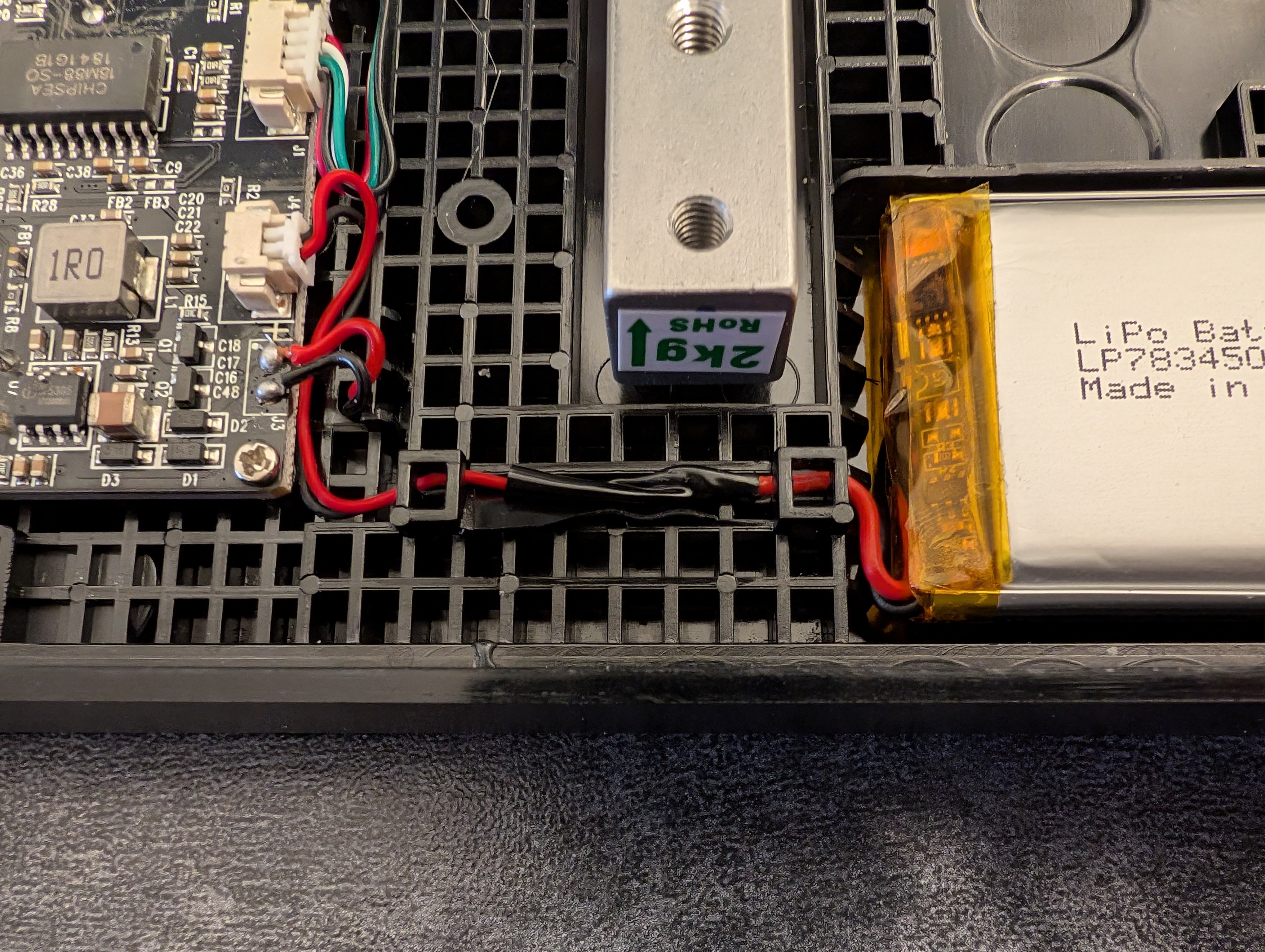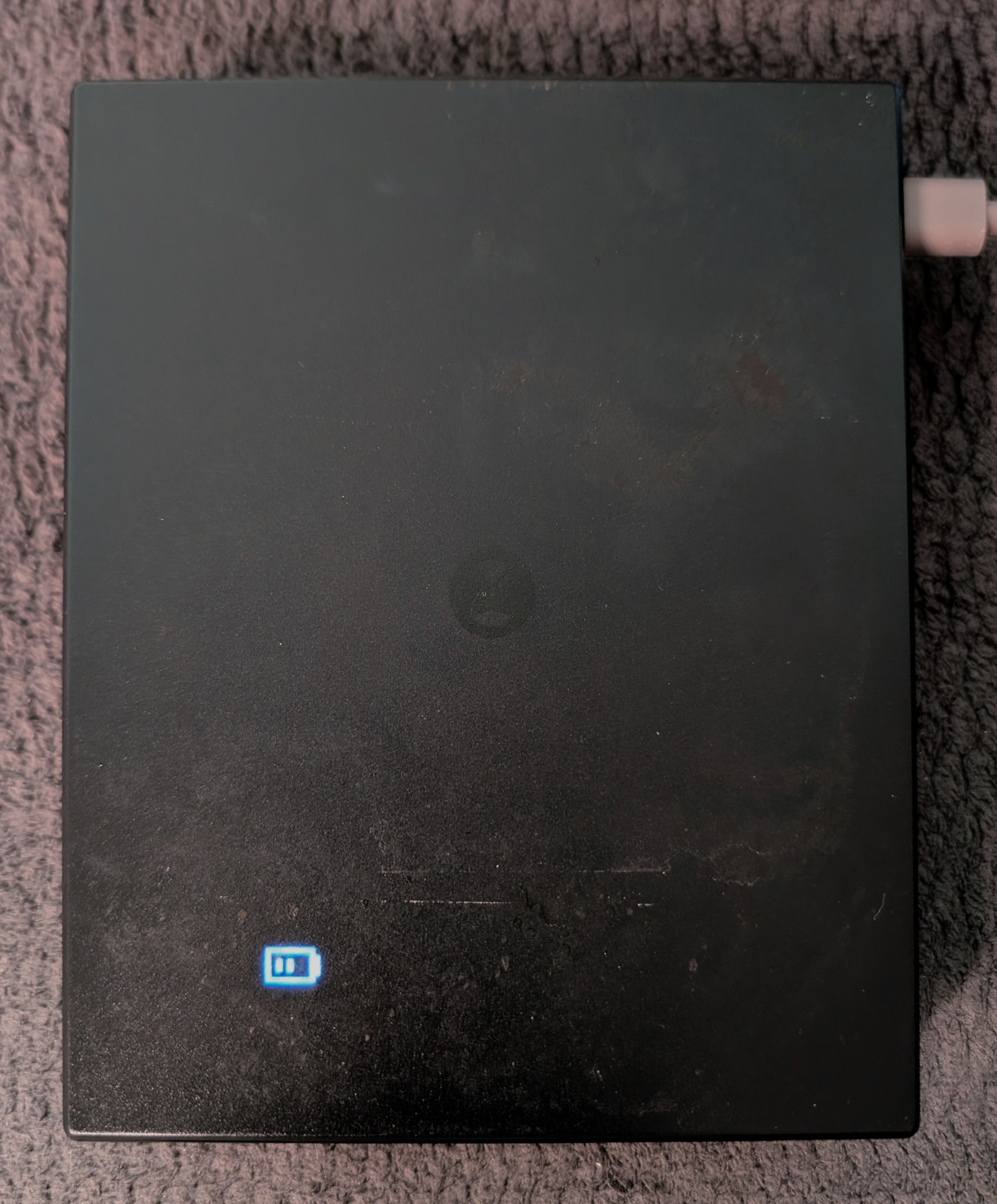

This is one of those situations when you just nod and take the endorsement.


This is one of those situations when you just nod and take the endorsement.


The repair:




It’s not exactly trivial if you have to change the connector of the replacement battery, but it’s not difficult either. AAA batteries would be way simpler and safer for most people.


An army surplus ammo can with its gasket removed.


Yeah, if the cells are standard, available and easy to replace and safe if abandoned, it’s not a huge deal replacing them every few years.


Especially now that NiMH rechargeables are so affordable and power dense.


TBH, this is a risk for all “value” devices that don’t have to pass NA/EU electrical certification. No cert means the cell can be whatever part was cheap and alright enough. Longer term reliability without specific testing isn’t obvious. Every now and then I fall into the rabbit hole of trying to remember all the different devices with potentially questionable cells. The occasion today is likely to trigger another sweep.
Found the GNOME developer.


I think the board has reached the end of the road. 😅


Iiinteresting. I’m on the larger AB350-Gaming 3 and it’s got REV: 1.0 printed on it. No problems with the 5950X so far. 🤐 Either sheer luck or there could have been updated units before they officially changed the rev marking.


On paper it should support it. I’m assuming it’s the ASRock AB350M. With a certain BIOS version of course. What’s wrong with it?


B350 isn’t a very fast chipset to begin with
For sure.
I’m willing to bet the CPU in such a motherboard isn’t exactly current-gen either.
Reasonable bet, but it’s a Ryzen 9 5950X with 64GB of RAM. I’m pretty proud of how far I’ve managed to stretch this board. 😆 At this point I’m waiting for blown caps, but the case temp is pretty low so it may end up trucking along for surprisingly long time.
Are you sure you’re even running at PCIe 3.0 speeds too?
So given the CPU, it should be PCIe 3.0, but that doesn’t remove any of the queues/scheduling suspicions for the chipset.
I’m now replicating data out of this pool and the read load looks perfectly balanced. Bandwidth’s fine too. I think I have no choice but to benchmark the disks individually outside of ZFS once I’m done with this operation in order to figure out whether any show problems. If not, they’ll go in the spares bin.


Lazy but wholesome.


I put the low IOPS disk in a good USB 3 enclosure, hooked to an on-CPU USB controller. Now things are flipped:
capacity operations bandwidth
pool alloc free read write read write
------------------------------------ ----- ----- ----- ----- ----- -----
storage-volume-backup 12.6T 3.74T 0 563 0 293M
mirror-0 12.6T 3.74T 0 563 0 293M
wwn-0x5000c500e8736faf - - 0 406 0 146M
wwn-0x5000c500e8737337 - - 0 156 0 146M
You might be right about the link problem.

Looking at the B350 diagram, the whole chipset is hooked via PCIe 3.0 x4 link to the CPU. The other pool (the source) is hooked via USB controller on the chipset. The SATA controller is also on the chipset so it also shares the chipset-CPU link. I’m pretty sure I’m also using all the PCIe links the chipset provides for SSDs. So that’s 4GB/s total for the whole chipset. Now I’m probably not saturating the whole link, in this particular workload, but perhaps there’s might be another related bottleneck.


Turns out the on-CPU SATA controller isn’t available when the NVMe slot is used. 🫢 Swapped SATA ports, no diff. Put the low IOPS disk in a good USB 3 enclosure, hooked to an on-CPU USB controller. Now things are flipped:
capacity operations bandwidth
pool alloc free read write read write
------------------------------------ ----- ----- ----- ----- ----- -----
storage-volume-backup 12.6T 3.74T 0 563 0 293M
mirror-0 12.6T 3.74T 0 563 0 293M
wwn-0x5000c500e8736faf - - 0 406 0 146M
wwn-0x5000c500e8737337 - - 0 156 0 146M


Interesting. SMART looks pristine on both drives. Brand new drives - Exos X22. Doesn’t mean there isn’t an impending problem of course. I might try shuffling the links to see if that changes the behaviour on the suggestions of the other comment. Both are currently hooked to an AMD B350 chipset SATA controller. There are two ports that should be hooked to the on-CPU SATA controller. I imagine the two SATA controllers don’t share bandwidth. I’ll try putting one disk on the on-CPU controller.


Wait, that’s a Canadian entity, interesting.
Don’t let be called a hypocrite - give $5. 😆


Goddamn.
Your PC is an unused server.